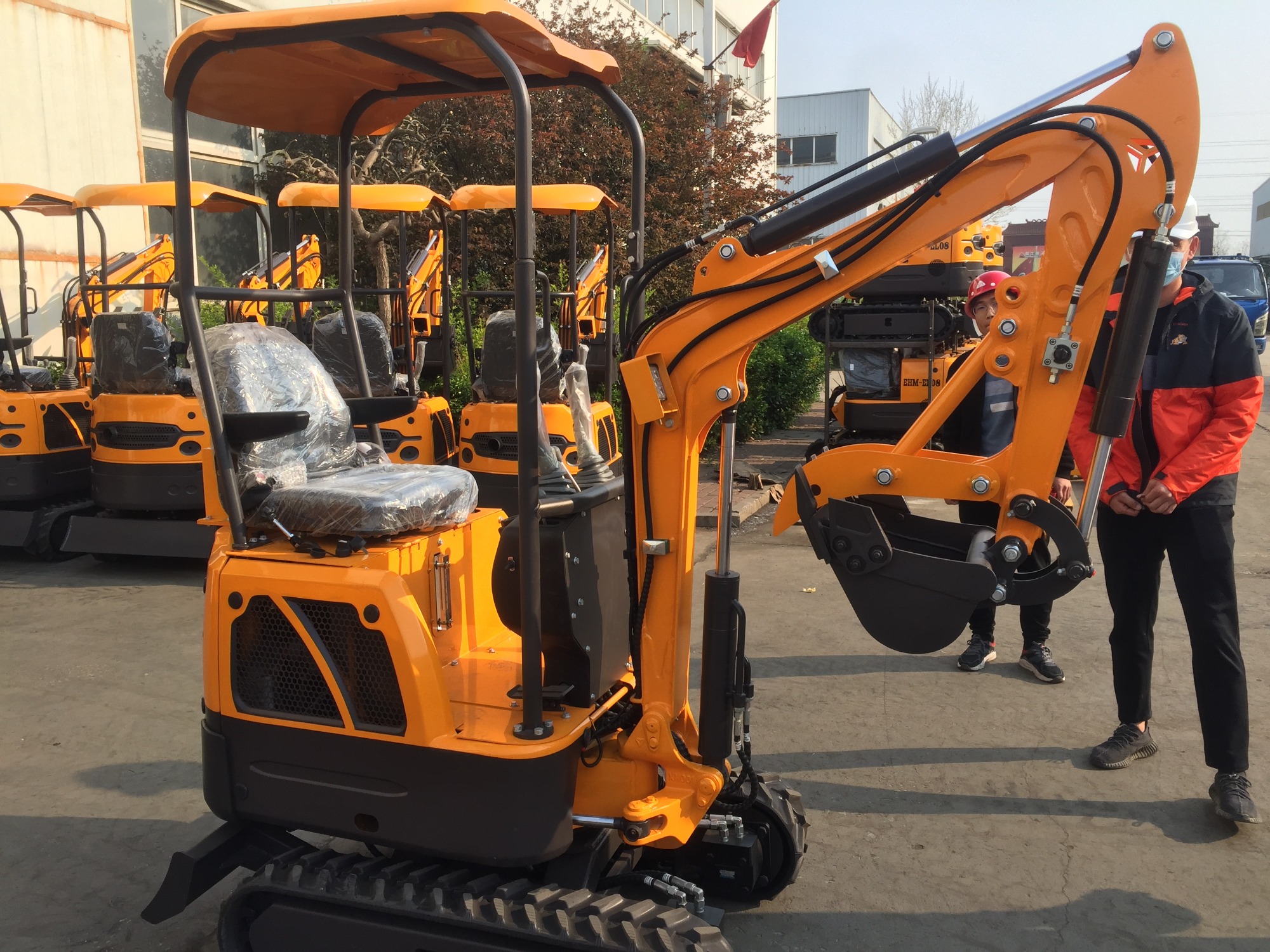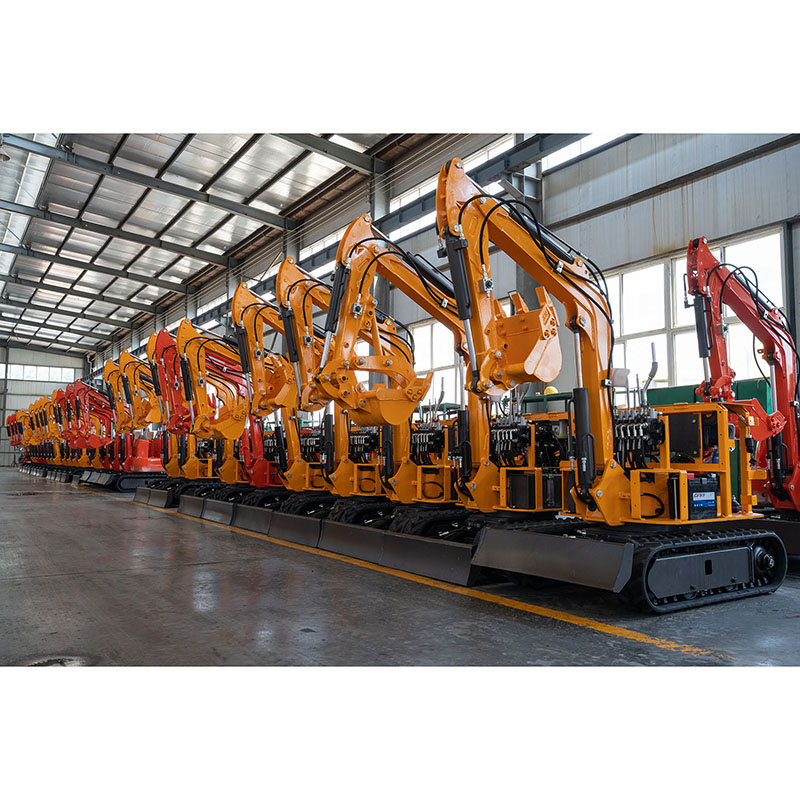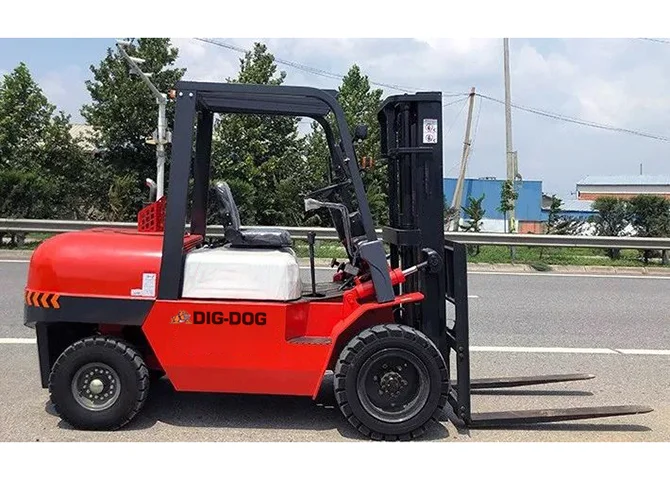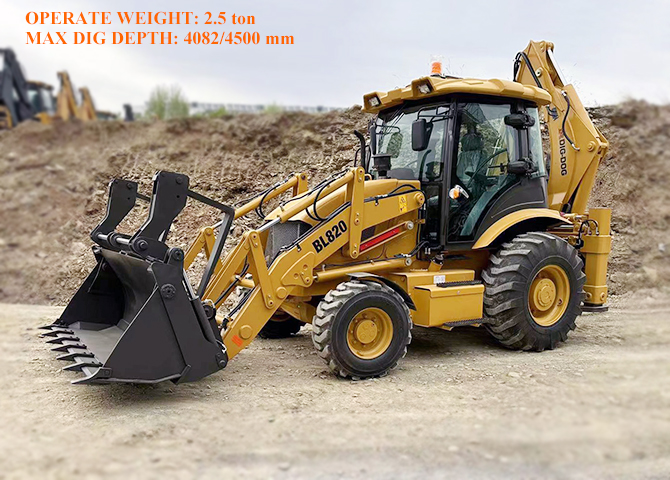
introduce
Small excavators are still a popular choice for various tasks in various industries. Manufactured by Bobcat, John Deere, Hitachi, Terex, Case and CAT, the new model is Tier 4 certified and accepts a large number of time-saving accessories. Whether you want to buy or rent, the most cost-effective first step is to find a reliable dealer. Note these two aspects of dealer support:
1. Service Level Agreement (SLA)
After-sales support is formed by quality service level agreement. The SLA specifies the terms associated with any emergency repairs and your routine maintenance schedule, both provided by the dealer or third-party technician contracted with the SLA.
When comparing SLAs, make sure they include:
Specific parts - A detailed list of parts used for routine service and maintenance. If the manufacturer's preferred part is not available, the SLA will list acceptable alternatives. It will also include any fees and additional costs not covered by the parts and labor service plan.
Maintenance Plan - This details the frequency of each type of maintenance for small excavators, including standard maintenance, extended maintenance (including the operating system) and comprehensive maintenance (covering every part and system of the machine).
Customer Support - If the reseller you are considering does not offer 24/7 customer support, check the SLA to ensure response times. This will vary depending on your geographic location and the size of your dealer. Ideally, this would be the next working day.
2. Understand site requirements
Working knowledge is another advantage of professional dealers. They ensure that the machine you use complies with all U.S. Environmental Protection Agency regulations as well as any local regulations governing the use of off-road engines and machinery (see our Select Dealers section for more information). The dealer can also connect you with representatives from local regulators and point you in the right direction to obtain any permits related to small excavators and your particular site.
At the same time, this purchasing guide covers the trends, types, specifications and accessories that continue to make small excavators so popular. We will also provide more tips and advice on what to look for at quality dealers to ensure you are making the best purchase.
trend
A recent survey conducted by Purchasing.com showed an increase in the number of used machines in certain market segments. To better understand the motivations of those interested in buying used heavy equipment, we pooled data from more than 71,000 queries between 2011 and 2014.
Trends in used machines focus on EPA requirements, buyers rebuilding their fleets after the recession, and real-time analysis containing updates that allow fleet managers and operators to monitor and fine-tune machine performance.
If you are comparing used mini-excavators, there are several points to consider: service life and running time, physical condition of the machine, and EPA compliance.
Service life and running time
In general, most small excavators have a high-end operating life of 10,000 hours. Heavily used machines, and those with less maintenance than recommended, can start to break down and undergo expensive repairs after around 8,000 hours of use.
When comparing used machines, preference is given to machines made within the last three years and with less than 2,000 hours of running time recorded on their timers. These models will include most of the latest technology, be 25 to 50 percent cheaper than new machines, and still have enough life span to be used full-time.
Note: The hour meter may be tampered with. According to some reports, this is a simple process on some models. Buying through a trusted source is one way to ensure you're getting value for money. You can also do some quick math to average the number of hours on the hour table with the year of manufacture. Is the weekly average pairing with the owner's claim of "light" or "part-time" use? What about the pedals? Do they show more wear than normal over the recorded time? Finally, ask to see the service record. Most dealers should be able to provide a detailed log of all maintenance performed on the old machine they sell you.
Physical check
Checking the mini-digger is not just about kicking tires (though that's important, too). There are many specific signs of wear to look out for, indicating overuse and expensive repairs to come. These include:
Joints - All joints around the boom, bucket bar and bucket should be firm and free of any bending or movement. Pins and bushings should be tight, indicating that the machine has been properly maintained and is likely to be oiled regularly. Loose connections can cause inaccuracies between the bucket rod and the actual placement of the bucket.
Structural integrity -- cracks, bending or large dents on the fuselage or boom of a small excavator may be damaged in the structure. Cracks at joints are particularly dangerous. Don't forget to check the landing gear. Large indentations beneath the machine may also indicate compromised safety and performance.
Hydraulic system - Unless the leak is severe, you may not be able to detect a slow leak underneath the machine. But slow leaks can be just as expensive. Therefore, check the hydraulic pump and hydraulic line hoses and cylinders under the hood for any leaks.
Accessories - These are usually the main source of productivity for small excavators. Whether the machine is equipped with a standard bucket or multiple accessories, check each accessory for wear. Pay particular attention to the fan between the bucket teeth, which can affect the cutting force.
Tracks - While not an integral part of the mechanical parts of the excavator, replacing tracks can still represent some kind of investment - an average of $400 to $3,000 per set. Check the remaining tread for wear, especially cracks or uneven wear, which may indicate mechanical problems. Ideally, a used mini-excavator should have at least 40 to 50 percent of the remaining rubber tracks worn.
Emissions Tier (EPA)
Emission standards, such as temporary Tier 4 and Tier 4, are now required for all newly built non-road diesel engines manufactured in the United States. In short, the standards and subsequent engine modifications aim to significantly reduce the levels of harmful emissions, such as particulate matter and nitrogen oxides, that these machines typically produce.
But the Tier 4 regulations only apply to newer models. Like excavators on the second-hand market, older excavators must comply with Tier 1 to Tier 3 emissions standards, phased in by horsepower level starting in 1996. When buying used, make sure the machine you are considering fits into one of the following three categories :(1) level 1 engines from 1996 to 2000; (2) Tier 2 engines from 2001 to 2006; Or (3) Tier 3 engines built between 2006 and 2008.
type
There are two types of small excavators: tail-swing excavators, sometimes called "traditional houses," and zero-tail-swing excavators. Your choice depends largely on your output requirements and available workspace. Here's how the two compare.
Tail swing excavator
Traditional house models have rear counterweights that stabilize the excavator during operation and offset the added weight in the bucket. When the machine rotates during operation, the counterweight exceeds the track width by 6 inches or more. The design can be problematic in a narrow working area, especially when rotating and placing waste soil. However, they reportedly offer many different advantages, mainly due to the extra space.
According to the leading manufacturer, the tail-swing model provides maximum lifting capacity, including more lifting capacity and more digging power for the bucket and arms -- all thanks to the extra leverage achieved through counterweights. The cab of the tail-swing excavator is also slightly roomier, providing some additional comfort and mobility for the operator. For these reasons, some dealers point out that this option can be used for the widest range of construction applications.
Zero tail swing excavator
Not to be outdone, the zero-tail swing excavator provides a comparable level of performance in digging depth, range, cutting height and tipping height. In addition, they can be easier to navigate in a narrow work area. Zero-tail swing models have a counterweight that rotates within the width of the excavator track, making them easier to operate along corridors and walls or other immovable obstacles.
Their design offers an additional cost-saving advantage: easy access. Maintenance points on zero-tail slewing excavators are usually accessible from the ground, simplifying maintenance and repair by having all major parts and components within easy reach.
Leading brands
As briefly listed in the introduction, there are easily more than a dozen brands producing small or compact excavators at present. We have selected three of the most well-known companies to provide you with a sample of how they compare, their research and development priorities, and the industries and applications they cater to.
Bobcat bobcat
The mini excavator is called the M series. They have been redesigned to provide a higher degree of performance through smaller, lighter machines. It appears to focus on a range of architectural applications that improve excavation performance by improving cycle times, while upgrading hydraulic systems to provide greater and more consistent power levels for attachments.
M series machines are supported by integrated rotary brakes that stabilize the load and prevent it from moving when working on slopes. This provides greater accuracy and frees the operator from having to engage the rotary brake manually. Bobcat also redesigned the design of the machine to provide new X-frame landing gear, providing greater ground clearance and making cleaning easier.
New features in the M series include automatic shift stroke, automatic idle and fingertip control.
John Deere
Focusing on compact and tail-wagging reduction designs, John Deere Mini Excavators aim to maximize fuel efficiency while minimizing noise. They use direct injection diesel engines, enabling them to be used in a variety of locations that may be sensitive to excessive noise.
Designed to accommodate a range of accessories, standard features include mechanical quick connectors and auxiliary hydraulic units. This versatility makes them ideal for agriculture, landscaping, and a variety of material handling applications.
Deel also modified the landing gear in the form of a hydraulic system that allowed the operator to retract the gear to less than 40 inches for ease through doorways, alleys and other narrow passages.
Notably, their cab design received first-class recognition for comfort and visibility.
CAT
Offering one of the slimmest shapes on the market, the smallest CAT Mini Excavator is little more than a seat, a set of controls, and a place to rest your feet. These compact sizes make them popular with individuals for basic ditching, digging, and similar light earthmoving tasks.
They are much less invasive than large excavators, ideal for tight Spaces, and can save a lot of time compared to manual labor. The CAT model takes further advantage of the narrow design, with retractable extended landing gear and blades that enable the machine to navigate in narrow passages and provide access to areas that larger models cannot service.
They feature customizable bucket rod lengths and include complete pilot control, eliminating cabling maintenance and increasing ROI by reducing long-term costs.
specifications
When comparing small excavators, the main factors that need to be considered are digging depth, dumping height and operating weight. These three considerations almost always influence the type and size of machine you get, as they directly affect the level of productivity on the job site.
Before using a particular model, pair your specific requirements with the capabilities of the machine to see how they match up. Small excavators will not have the power or functionality (let alone the safety) to do much larger work efficiently. While bigger might look better, machines that are too big could cause unnecessary damage to the site while burning unnecessary diesel fuel.
With that in mind, here is a list of the top specifications manufacturers use when comparing their mini-excavators with competing models. While some machines may not fall within these ranges, they represent an average of the machines currently available on the market.
drilling
Usually used for underground utility construction and installation of pipes or cables, directional drilling can be drilled horizontally underground with an average diameter of 3.7 to 4.5 inches and is suitable for small excavators.
Net power
This represents the total output the machine can provide, with the low end reserved for light tasks such as landscaping and material handling, while the high end is dedicated to stump removal, ditching, heavy construction and mining applications. Expect to find horsepower between 10 HP and 50 HP.
Oscillating system
The swing system design allows the operator to hydraulically move the arm to the left or right within a range of angles. This is used for offset digging and ditching parallel to machine tracks. A common swing speed is between 9.2 and 11 RPM. The degree of swing often varies from side to side, with 50° to 60° common on the right swing and 60° to 80° common on the left.
Engine fuel
Given the horsepower required for even light duty, the small excavator runs on diesel fuel (and thus meets Tier 4 certification requirements), with fuel tank sizes ranging from 2.6 gallons to 33 gallons, depending on the size and output of the machine.
The biggest
Regulation In order to maintain the torque load of the engine under different requirements, the maximum regulation RPM of small excavators is about 2200 RPM.
Maximum depth of excavation
This is usually one of the main considerations when buying a small excavator, as it determines the depth of the trench. In the small excavator category, maximum excavations are expected to be between 5.6 and 12 feet.
Maximum dumping height
This is another major consideration, especially on construction sites where machines are used for material handling. The maximum dumping height extends from 6 feet to 13 feet.
Work weight
This segment, called 'small' or 'compact,' typically weighs between 2,000 and 18,500 pounds and was chosen because it has the least impact on the working environment, especially when operating on expensive surfaces.
The attachment
Accessories make or break the productivity of small excavators and the resulting return on investment, which is why well-known brand manufacturers and third-party producers continue to expand their product ranges while improving existing accessories.
One of the most popular developments that comes with almost all new accessories now is the inclusion of fast connectors. The fast connection device is designed to minimize the time required to switch tasks, allowing a single person to change accessories without using tools.
There are two main types of quick connectors: semi-automatic and automatic. They perform essentially the same, allowing the operator to control the main connection mechanism from the cab. They also include a safety device to ensure proper attachment. This is where you'll find the difference: the semi-automatic requires the operator to manually engage the coupler's own safety device, while the automatic variety uses remotely activated internal devices.
Below is a brief overview of some of the most popular attachments, which are often paired with small excavators, and what you can expect to pay for each attachment.
Auger - Simplifies digging holes from 6 to 48 inches, with plumb accuracy to any type of soil. Options include direct drive auger with balanced torque and RPM or gear-driven planetary auger for heavy-duty applications requiring maximum torque. Expected pay: $1,700 to $3,000
Breaker -- Cut concrete and other paved surfaces quickly and neatly with this fast connector attachment that has been modified to produce less noise and vibration. Crushers typically have an impact energy rating of 60 to 1,000 pounds. Estimated payment: $2,700 to $35,000
Ditch digger - Moves easily through rocky soil like sand, digging 2 to 5 feet deep and 4 to 12 inches wide. Some models also feature side-shift operation to dig trenches near buildings or other immovable objects. Expected pay: $4,700 to $9,000
Scoop - Upgrade standard scoop on small excavators to increase productivity by combining the scoop's earth-moving capability with additional features. The enhanced type includes grading bucket, ditching bucket and inclined grading bucket. Expected payments: $660 to $1,500 for standard digging and graded buckets; Tilt rated version $3,500 to $14,000
Clamp (aka hydraulic thumb) - This accessory enhances your standard bucket by allowing you to safely lift loose objects, branches, trash, and similar debris. Clamped loads to prevent overflow and movement, fixture accessories are used with ditching buckets or three-line grab and can be adjusted to suit a variety of working conditions and materials. Expected pay: $750 to $900
Flail Mower - For landscaping and agricultural applications, this heavy duty mower can cut and cover grass and brushes up to 4 inches in diameter. Look for flail mowers with rotor brakes - a safety enhancement that stops the blade within seconds of the attachment closing. Estimated pay: $8,500 to $20,000
Flat blade - Designed to smooth the surface of almost any work area, the flat blade can tilt, level and outline a variety of terrain. Estimated pay: $3,400 to $14,100
Grab -- Similar to clamps but more capable of pulling trees, pipes, and other cylindrical objects, the grab is an all-in-one accessory popular for demolition, land clearing, and routine facility maintenance. Expected pay: $4,800 to $16,900
Packer wheel - After ditching with packer wheel, the ground is firmly and quickly filled. Some have open-sided sheep-foot designs that fill grooves from bottom to top and can be up to 11 inches wide. Expected payment: $1,500
Plate compilers -- Similar to packer wheels but designed for larger grooves, plate compilers eliminate the need for manual packing by delivering high power pulses of up to 2,200 shocks per minute. Floor widths range from 12 to 34 inches, and impact forces can range from approximately 3,700 pounds to 24,700 pounds. Expected payment: $3,000 to $8,000
PowerTilt Swing -- The PowerTilt attachment tilts the excavator bucket to the left or right. In doing so, it provides a greater range of accessibility while avoiding the operator having to relocate the machine. They are also ideal for digging under or around man-made and natural obstacles such as drains, foundations and roots. Expected payment: $2,300
Splitter - Use a splitter to quickly and easily tear apart packaged, frozen, or similar hard ground. It is reinforced by a heavy-duty shank and has a single-tooth design that can easily penetrate a variety of working surfaces while cutting through underground obstacles such as tree roots and even steel bars. Expect to pay $2,500 to $4,300.
Choose high-quality dealers
Whether your mini-digger is part of a larger fleet or just a one-time purchase to improve the productivity of a single operation, an ongoing relationship with a qualified dealer will be one of the most advantageous aspects of ownership.
As described in the introduction, professional resellers provide a range of services and support through their service level agreements. They also supplement the initial purchase with consulting on scalability. This level of support may actually grow your business - advising you on other types and sizes of material handling equipment that can increase your capability and profitability to an equal degree.
Your choice of excavator dealer is as important as the machine itself -- more so, in fact. Therefore, before you commit, it is critical to evaluate all your options and find a reseller who can meet your future needs. Here are some of the main aspects of dealer support to consider:
Training resources
Unlike some of the more complex earthmoving equipment, small excavators are very easy to operate. But that doesn't mean that a little explanation of security-related operating procedures and best practices won't improve your handling of the machine and the results you get. Ask if training is provided when comparing dealers. If so, will they go to your spot or will you have to go to theirs?
It is also worth noting that some major manufacturers provide safety and operator training materials for small excavators, with Lynx being a notable example. On the company website, you can find free safety videos and other information about the machines they make. Bobcat also offers training course kits (available for purchase) that include DVDS, training manuals, administrator's guides, and even some certificates of completion.
Although no specific training or licensing is required for this particular machine, these complementary products can prove to be very valuable additions to the purchase.
If your dealer doesn't offer excavator training, but you want it as part of your employee training program anyway, there are many schools that will train people to operate small excavators. Unlike a manufacturer's program, these categories are not specific to the manufacturer or model. They provide a general overview of the machine and often provide guidance in your or their location (usually depending on the number of employees needing training).
financing
Not everyone buys a mini excavator directly. In fact, many people now prefer other forms of purchase financing, ranging in price from $20,000 to $75,000. Many dealers offer rental options on the machines they carry, and some now rent more than they sell. But for some companies, leasing small excavators can be more profitable, especially if they are contracted for long-term use.
This type of financing allows companies and individuals to take advantage of the latest technology while taking advantage of depreciation based tax credits, often replacing machines when new technology comes to market. Leasing equipment can give startups the momentum they need to grow, and it can help companies looking to expand or build businesses without the need for a one-time outlay.
But it is important to weigh the terms offered by the dealer. Please consult your existing bank for the terms of business financing and business equipment loans. A typical fixed-rate loan starts at about $25,000 and allows you to borrow up to 80% of the purchase price of the machine. In addition, loans are often guaranteed by the excavators themselves, simplifying the approval process somewhat. So if you build good relationships and have a good credit history, the terms you may be eligible for may be able to minimize your cost of ownership.
DIG-DOG is a family brand of BONOVO.
Its story dates back to the 1980s when it was a well-known brand for excavator attachments.
With years of hard work and industry experience accumulation,DIG-DOG has become a respectable brand for
small earthmoving machines. We believe that "A Dog is actually more competent at digging than a Cat".
Our mission is to make DIG-DOG a reliable brand of small diggers who work efficiently in your yard and our
slogan is:"DIG-DOG,Dig Your Dream Land!"

Our product with beautiful appearance, high configuration,superior perfomance,low fuel consumption,wide operating range. It is suitable for loosing soil of vegetable greenhouse,campus greening of municipal departments. digging thehole for tree planting of Fuit-land Nurseries.concrete pavement crushing,sand-gravel material mixing, construction work in the narrow place and so on.
Quick coupler to connect multifunctional attachments tools like auger,hydraulic hammer,ditching bucket,grapple,
thumb,tilt bucket,ripper,rake and so on. It can meet your different working conditions and reduce operating costs, iberate the workforce improve the mechanization, low investment, high return. we aim to provide our customers with suitable earthmoving machine and suitable attachments that will help them get the job done – the right way.
 A Ultimate Guide to Clamp Forklifts and Attachments
A Ultimate Guide to Clamp Forklifts and Attachments
 How To Choose The Right Compact Wheel Loader
How To Choose The Right Compact Wheel Loader
 How Much Does a Forklift Weigh?
How Much Does a Forklift Weigh?
 How Much Does a Backhoe Weigh
How Much Does a Backhoe Weigh